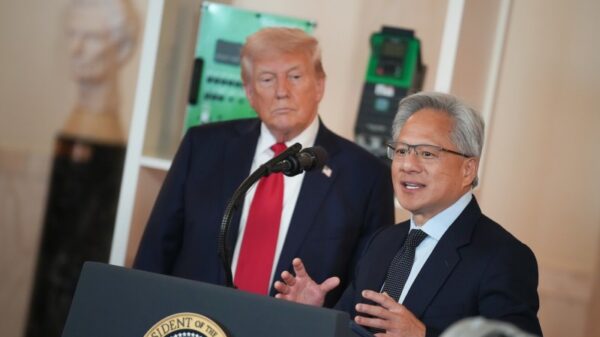Federal Reserve member Miran has called for substantial interest rate cuts, citing recent economic conditions and employment data as critical factors influencing monetary policy. Speaking to analysts, Miran emphasized the need for a proactive approach as the economy evolves, particularly in light of technological advancements such as Artificial Intelligence (AI).
Despite uncertainties surrounding the impact of AI on various sectors, Miran expressed confidence that forthcoming job data could sway opinions within the Federal Reserve regarding rate reductions. This statement reflects an ongoing debate among policymakers about the appropriate monetary response to current economic challenges.
Job Data as a Catalyst for Change
The U.S. economy has shown signs of both resilience and vulnerability, prompting discussions about the Federal Reserve’s next moves. Miran noted that job creation numbers, which are expected to be released soon, will play a pivotal role in shaping the Federal Reserve’s decisions. If the data indicates strong job growth, it could bolster the case for lowering interest rates, a strategy aimed at stimulating economic activity.
The prospect of lower rates is particularly appealing as businesses and consumers alike navigate a complex landscape marked by inflationary pressures and global economic uncertainties. Reducing interest rates could ease borrowing costs, thereby encouraging spending and investment.
The Role of AI in Economic Projections
While the potential of AI to transform industries is widely acknowledged, Miran pointed out the difficulty in quantifying its effects on the economy at large. The integration of AI technologies into various sectors could lead to increased productivity, but it also raises questions about job displacement and the future workforce.
As the Federal Reserve grapples with these challenges, policymakers must balance the benefits of technological advancement with the need to maintain economic stability. The ongoing dialogue surrounding interest rates reflects a broader concern about how emerging technologies will shape the economic landscape in the years to come.
In conclusion, Miran‘s remarks underscore the urgency for the Federal Reserve to consider significant interest rate cuts as a means of responding to evolving economic realities. The anticipated job data will likely serve as a crucial indicator in determining the appropriate course of action. As the situation unfolds, the Federal Reserve’s decisions will have far-reaching implications for both domestic and global economic conditions.






































































